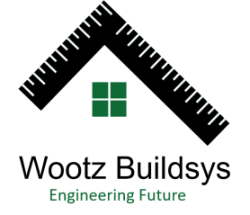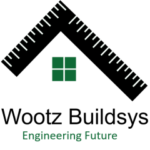
In modern times of construction, prefabricated structures have emerged as a revolutionary solution, offering efficiency, sustainability, and versatility. But what exactly are prefabricated structures, and why are they gaining popularity in the construction industry? Innovative approach to building and uncovering the key aspects of prefabricated structures.
Prefabricated structures, also known as prefab structures, are becoming increasingly popular in the construction industry. These structures are built off-site in a controlled environment before being transported and assembled at their final location. From residential homes to commercial buildings and even industrial facilities, prefabricated structures offer a wide range of benefits and applications. In this blog post, we’ll delve deeper into what prefabricated structures are, their advantages, types, and why they’re gaining traction in the construction world.

Understanding Prefabricated Structures
Prefabricated structures are constructed using prefabrication techniques, where building components are manufactured in a factory or manufacturing facility away from the construction site. These components are then transported to the site for assembly, reducing the need for on-site labor and cutting down construction time significantly.
Key Features of Prefabricated Structures
Modular Design: Prefabricated structures are characterized by their modular design, with building components manufactured in standardized modules. These modules can include walls, floors, ceilings, and even entire room units, allowing for easy assembly and customization.
Off-Site Fabrication: One of the primary advantages of prefabricated structures is that the majority of the construction work takes place off-site in factory settings. This controlled environment ensures precision engineering, quality control, and efficient production processes.
Rapid Construction: By prefabricating building components off-site, construction time is significantly reduced compared to traditional building methods. Prefabricated structures can be assembled on-site in a fraction of the time, enabling faster project completion and reduced labor costs.
Sustainability: Prefabricated structures are inherently more sustainable than traditional construction methods. The controlled manufacturing process minimizes material waste, while the use of standardized modules promotes resource efficiency and recycling. Additionally, prefabricated structures can incorporate eco-friendly materials and energy-efficient designs to further enhance sustainability.
Versatility: Prefabricated structures are highly versatile and can be used for a wide range of applications, including residential, commercial, industrial, and institutional buildings. They can also accommodate various architectural styles and design preferences, offering flexibility in both form and function.
Benefits of Prefabricated Structures
Cost-Effective: Prefabricated structures often offer cost savings due to reduced construction time, labor expenses, and material waste.
Quality Assurance: The controlled factory environment ensures consistent quality and precision in manufacturing, leading to higher-quality finished products.
Flexibility: Prefabricated structures can be easily expanded, relocated, or repurposed to adapt to changing needs or environments.
Enhanced Safety: Off-site construction minimizes on-site hazards and risks, promoting a safer working environment for construction workers.
Types of Prefabricated Structures
Prefabricated structures come in various types, each suited to different applications and requirements:
Modular Construction : Modular construction involves assembling pre-made modules or sections of a building, which are then stacked or connected to form the final structure. This type of prefabrication is popular for residential and commercial buildings.
Panelized Construction : Panelized construction involves manufacturing building panels, such as walls, floors, and roofs, off-site and then assembling them on-site. This method offers flexibility in design and is often used for residential and small commercial projects.
Panelized Construction : Panelized construction involves manufacturing building panels, such as walls, floors, and roofs, off-site and then assembling them on-site. This method offers flexibility in design and is often used for residential and small commercial projects.
Why Prefabricated Structures Are Gaining Traction
The increasing demand for sustainable and cost-effective construction solutions has contributed to the growing popularity of prefabricated structures. Builders and developers are turning to prefabrication to streamline construction processes, reduce project timelines, and minimize environmental impact.
Moreover, advancements in technology and manufacturing techniques have made prefabricated structures more versatile and customizable than ever before. From intricate architectural designs to energy-efficient features, prefabricated structures can be tailored to meet the specific needs and preferences of clients.
Conclusion
Prefabricated structures offer a promising solution to the challenges faced by the construction industry. With their efficiency, cost-effectiveness, and sustainability, they are revolutionizing the way buildings are designed and constructed. As demand for faster, greener, and more affordable construction methods continues to rise, prefabricated structures are poised to play a significant role in shaping the future of the built environment. Whether it’s a residential home, commercial building, or industrial facility, prefabricated structures offer a viable and innovative solution for modern construction needs.
Frequently Asked Questions (FAQ’s)
Prefabricated structures are buildings or building components that are manufactured off-site in a controlled factory environment and then transported to the construction site for assembly. These structures are designed to be easily assembled and offer various benefits over traditional construction methods.
Prefabricated structures offer several advantages, including faster construction timelines, reduced labor costs, improved quality control, enhanced sustainability, and greater flexibility in design and customization. Additionally, they can be constructed in adverse weather conditions and are often more cost-effective than traditional construction methods.
There are several types of prefabricated structures, including modular buildings, panelized construction, and precast concrete structures. Modular buildings consist of pre-made modules that are transported to the site and assembled into the final structure. Panelized construction involves assembling pre-made panels at the site. Precast concrete structures are made by casting concrete elements off-site and then transporting them to the construction site for assembly.
Prefabricated structures are versatile and can be used in various applications, including residential housing, commercial buildings, industrial facilities, educational institutions, healthcare facilities, and temporary structures such as offices, classrooms, and housing for disaster relief efforts.



